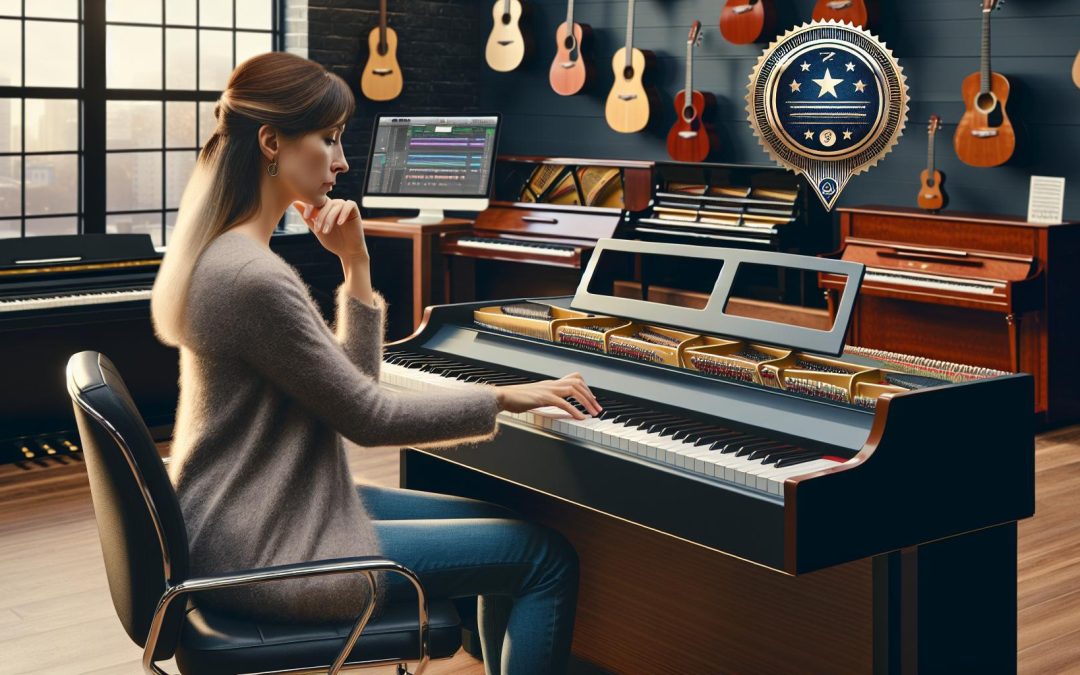We've all been there, right? Trying to encourage a budding musical interest in a child, but not sure if it's a fleeting fancy or a lifelong passion. So, we opt for the budget-friendly route, a portable keyboard, just to test the waters. But is this approach doing more harm than good?
I've seen it time and time again. Parents, with the best intentions, buy these keyboards as a starter instrument. However, these keyboards often hinder real development and can even cause students to lose interest in playing altogether. These kids can play songs perfectly at home, but when they switch to their teacher's real piano, everything falls apart.
Deciding to learn piano is the first step on an incredibly rewarding journey
When it comes to playing the piano, an authentic desire to learn is the first and foremost requirement. Many folks express interest in piano lessons - for themselves or their kids - yet the commitment often falls short. I've observed this countless times, with families choosing low-cost, quick lesson programs accompanied by the purchase of a cost-effective unweighted keyboard. The common thread here is a focus on saving money rather than investing in fruitful musical education.
Unweighted keyboards can be miraculous gadgets for a beginner, exhibiting a flurry of features. Still, they often can’t mimic a traditional piano's authentic feel and response, which are fundamental aspects of genuine piano education. The end result? A month passes, and the child new to music, despite consuming numerous lessons, has struggled to learn anything substantial, and that $200-$300 spent on the temporary setup might have been put to better use.
Every beginner should bear in mind that initiation to this musical journey demands genuine interest, investment of time, and a few extra bucks to attain an instrument with an authentic feel. The essence here is making a distinction between cost-effectiveness and valuable investment in a worthwhile musical journey.
Now let's step into the brighter side of the aisle. Once you've unlocked your ambition to learn piano and made a wise decision on investing in a quality instrument, you’re in for a fantastic voyage. This journey isn’t solitary either - you’ve got a faithful companion: your piano.
Your piano is not just an instrument—it's your consolation, gratification, a homely presence, and your learning partner. In other words, selecting the right piano is of utmost importance. It doesn't come easy, though - the process involves understanding a multitude of options and terms that could be quite overwhelming.
The key, pardon the pun, is to bifurcate the options into three simple categories to ease the selection process: The budget-friendly option with convenience and versatility, the high-end authentic feel producing acoustic pianos, and the midrange option having a balance between the two. It's not about the information overload. Instead, it's about choosing the right instrument which aligns with your commitment to fully immerse in the grand symphony of piano learning.
Pros.
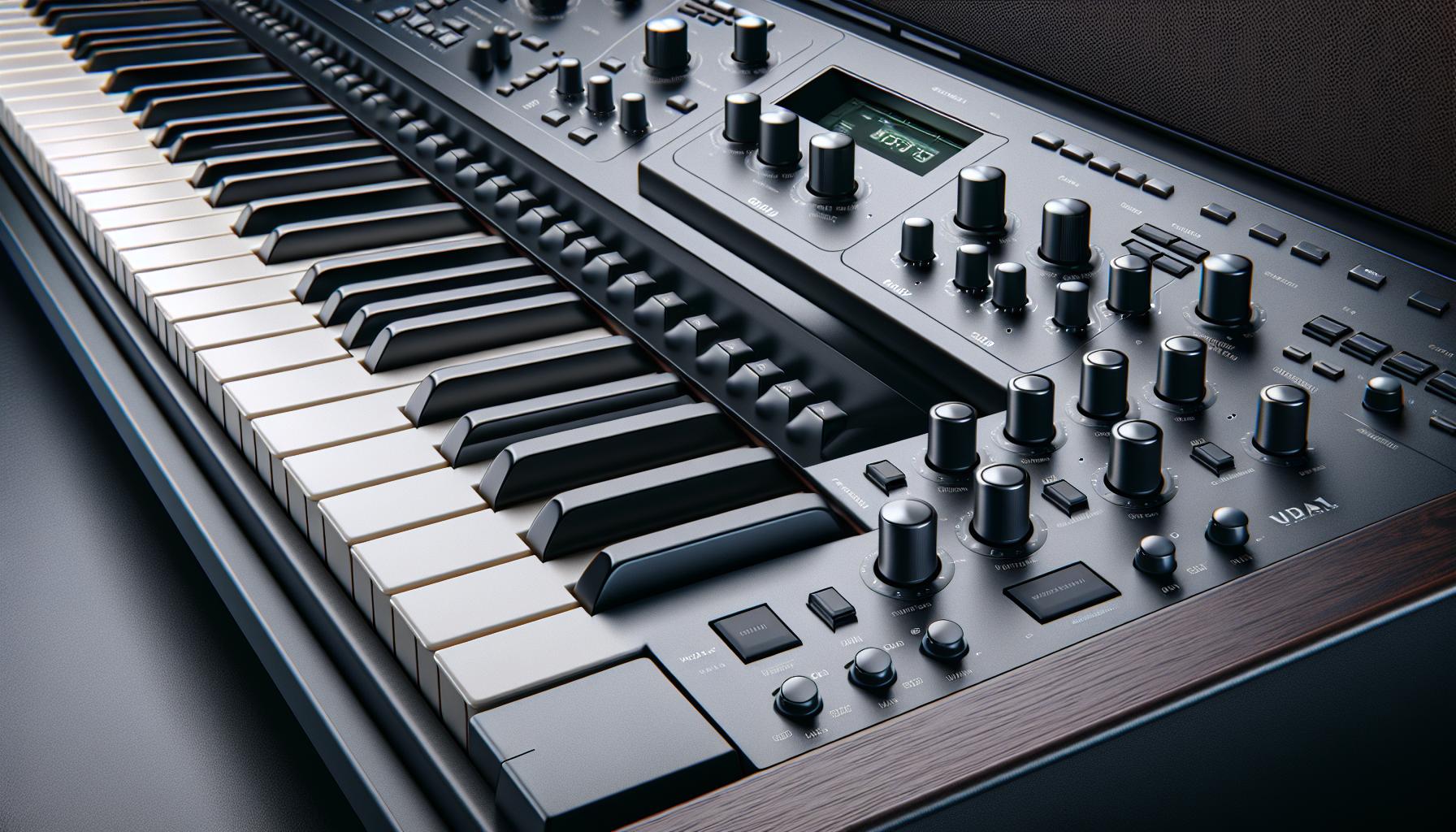
Incredibly, there's a myriad of advantages to investing in a quality piano, even if you're still a beginner. From emulating the truest sound to providing an authentic feel, right keyboards tend to make transitioning to the piano smooth and almost effortless.
The Truest Sound
Sound quality remains crucial in grasping how an authentic piano should sound. Interestingly, industry advancements in sound replication technology constantly strive to provide a lifelike piano sound. Higher-end keyboards like the Roland FP-10, for instance, employs a sophisticated sound engine mimicking the subtle nuances of a piano's sound: the hum of hammers hitting the strings, the distinct string vibrations when depresses the damper pedal among others. Although it might sound trivial, those little touches significantly enhance the sense of realism. Imagine having a jam session with another player also using a grand piano sound - you wouldn't want your end sounding off, would you?
Authentic Feel
Right after sound quality comes the necessity of an authentic feel. Every quality piano should replicate the true essence of a traditional piano's weighted keys – featuring a delicately balanced weight bringing out even the subtlest nuances of sound. Not only does this support different music genres where articulation is paramount (here's to you, classical and jazz fans), it also becomes a delight for your fingers. Given the importance of ensuring an authentic feel, leading brands have made significant strides. For instance, the Roland HP702's PHA4 Standard keyboard boasts of a play experience closely akin to a genuine piano, not too light like the Casio, and not overly heavy like the Yamaha.
Easier to Transfer to Keyboard
On the other end, despite the authentic sound and feel, the beauty of starting on a quality piano is how much easier it makes the transition to the keyboard. With a quality piano, going from one sound (piano) to the vast array of keyboard sounds becomes a manageable journey. When a beginner learns on a real piano, they'll know how it feels when a key is played, thereby causing the action frame to move the hammers that strike the strings. They grow familiar with this feel and, as a result, transitioning to keyboards becomes less challenging. Even though keyboards might not entirely replicate that feel, having the experience from an authentic piano is a significant leap forward.
Cons.
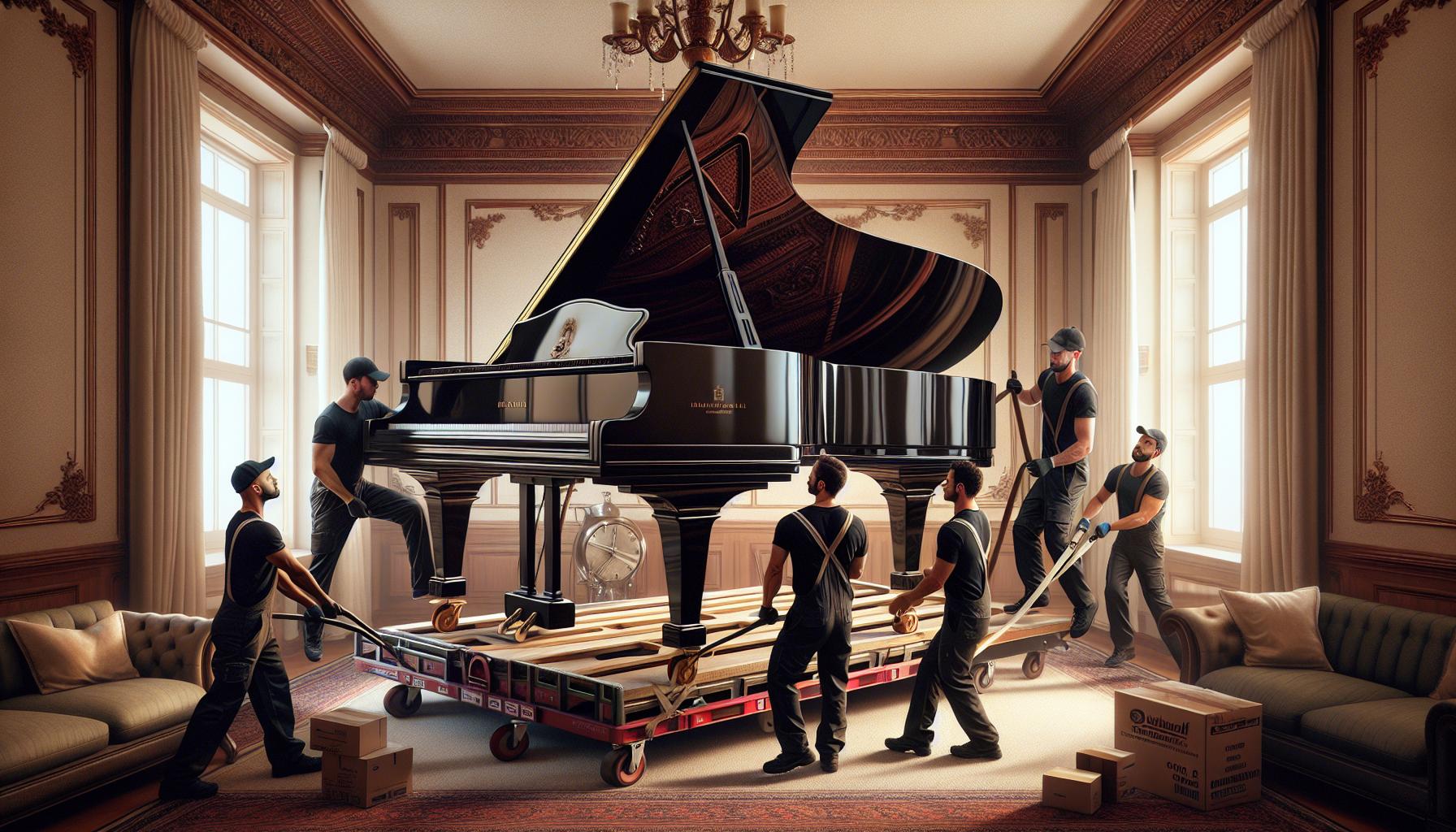
While quality pianos, such as the Roland FP-10 and Roland HP702, offer undeniable benefits, it's important to take into account some of the cons that come along with them. These can include heftier price tags, regular maintenance and their actual size, which can heavily factor into your decision depending on what you're looking for in an instrument.
1) Costs More
While they do provide an unparalleled playing experience, quality pianos like those we've discussed tend to come with a notably higher price tag than their digital counterparts. For instance, professional piano movers and tuners can be quite costly. It could set you back roughly $200-$400 to move an upright piano, and factors such as stairs and distance can increase this cost. If you're shipping from outside your city/state, greater distances across the US can set you back anywhere from $700 to $2000 and can take up to 3-4 weeks.
Moving a grand piano can cost between $300 - $1000 to move locally, depending on the logistics, and moving a grand nationally can cost between $1000 - $2500. The cost of moving a piano is something that's often overlooked but is a crucial factor in the decision-making process.
2) Higher Maintenance
Quality pianos also require regular maintenance which can quickly rack up the costs. Tuning, a necessity after moving a piano, costs between $100-$175 each visit, and should be done ideally twice a year. Such maintenance needs can add to the overall cost of owning a quality piano.
Also, while less common, repairs on an acoustic piano can be quite significant. For instance, a broken pin block can render most pianos worthless and can cost as much as $8000 on high-end grands.
3) They're Really Big
Finally, let's not forget size. The sheer size of quality pianos can be a deterring factor for many. An average vertical piano is about 5 feet wide, 2.5 feet deep, factoring in space for the musician to sit, the piano can occupy a large space. A piano's size not only impacts where you can place it in your home, but it also affects its ability to be moved or rearranged as desired.
From their weight to their delicacy, moving a piano isn't a simple feat. Remember, the average weight of a vertical piano is approximately 500lbs! It's not something that you'll be able to easily shuffle around, and every move may require professional piano movers, with another surge in moving costs.
Purchasing tips.

Buying a piano can be a gradual process. There's no need to rush. You might be itching to get your hands on the keys, but waiting just a bit longer to make a more informed purchase can make a world of difference in your learning journey. After all, the last thing we want is for you to end up like those who buy too quickly and end up regretting it down the line.
When you're out there scanning through options, don't blindly trust what a salesperson or a friend recommends. Sure, their insights could be valuable, but you've got to do your own research as well. The same applies to photographs given by sellers. It’s not uncommon for these to reveal available features, often in very small print or incomplete sentences at the end of the description.
A key factor to take into account is the keyboard compass. On a standard piano, you have 88 keys, and high-end electronic keyboards offer the same. However, most options meant for student or casual use have around 61 keys. Be sure not to let terms like "full keyboard" or "complete keyboard" fool you. A 61-key keyboard should be your minimum, as this will allow you to play a wide range of music pieces.
By the time you're playing Chopin and Beethoven, you'll likely have moved onto a full-scale piano. A word of caution here, anything fewer than 61 keys transforms the electronic keyboard into a mere toy against learning.
One more aspect to consider is where, or from whom, you plan to make your purchase. If you're looking at used pianos, make sure to buy from a reputable dealer or have an experienced piano technician inspect the instrument before anything else. Buying correct used piano can be an affordable first step into piano playing. However, choosing the wrong one could end up costing you much more than it's worth.
Remember, your piano investment should bring joy and build memories in your home. It's not just about matching the color to your furniture or deciding between an acoustic and a digital piano. It's much more than that. After all, buying a piano isn't a decision you make every day. So let's do it right, shall we?
Pros.
Cheap piano keyboards come with numerous advantages worthy of note. While they might not provide some benefits that accrue from owning an acoustic piano, their price point, low maintenance requirements, and practical benefits pack a punch for new musical explorers.
Friendlier Price
First off, the friendlier price tag is a significant advantage of opting for cheap piano keyboards. You can easily find multiple options within the $500 - $5,000 range, which is notably less than what you'd expect to pay for a typical grand piano (approximately $5k - $300k). So, if you're starting out exploring the piano or have strict budget constraints, cheap piano keyboards provide a less financially taxing option for you.
Much Less Maintenance
Next, the reduced maintenance requirements of cheap piano keyboards can be a big advantage, particularly for beginners. Acoustic pianos, especially grand ones, require regular tuning — ideally by a professional tuner twice a year. On the other hand, digital keyboards don't have this maintenance need, saving you both time and resources.
Greater Practicality
Then there's greater practicality. Comfortably portable and compact, cheap piano keyboards can be an excellent choice for apartment dwellers or touring musicians. They also offer built-in metronomes, transposition features, and drum beats to provide a more comprehensive learning experience. Plus, the option to practice with headphones allows for private practice sessions at any time — a feature not common with acoustic pianos.
Interestingly, some keyboards keep effect settings (such as those for modulation, chorus, and reverb effects) in memory, restoring them as needed. Features like these enhance the overall functionality and user experience of cheap piano keyboards, arguing their case for being a practical choice compared to traditional pianos.
As we continue this journey in our quest to investigate whether investing in cheap piano keyboards helps or hurts, we will further explore the cons that accompany these pros — weighing benefits against downsides and considering individual user needs.
Cons.
1) Inauthentic sound source
Even though keyboard technology's come a long way, there's a significant difference between the sound produced by an acoustic piano and its cheaper, digital counterparts. Because there are no hammers striking strings in a keyboard, the sound source is ultimately speakers - either built-in or connected. While the replication of the true piano sound has improved, it's just not the same. It's worth noting in your budgeting decisions.
2) Imperfect feel
There's an intangible quality to playing an acoustic piano that cheap keyboards often can't mimic. From the depth and response of the keys to their texture and weight, there's a significant difference. For many skilled musicians, even the best cheap keyboards can't offer the tactile satisfaction of a real piano.
3) Harder to transfer to piano
In the case you eventually want to make the transition to an acoustic piano, starting on a cheap keyboard might make this more challenging. The feel, sound, and technical aspects of playing a real piano are distinctive, and starting with a budget keyboard could limit your growth and adaptability.
Portable Keyboards Are Toys – NOT Tools
Portable keyboards, specifically the budget ones, are designed with convenience and ease of use in mind, rather than aiming to provide an authentic piano-playing experience. While their portability does provide a level of flexibility, they're often seen as toys rather than serious musical instruments.
There Are Better Options
Digital pianos
Digital pianos can offer a significantly enhanced experience compared to cheap keyboards. They often include fully-weighted keys, closer mimicking the feel of an acoustic piano and providing a greater range of volumes and timbres. They could be a worth-considering upgrade for anyone looking for both the convenience of a digital instrument and the sensation of a traditional one.
Acoustic pianos
Acoustic pianos, albeit more expensive, offer an experience that no digital instrument can match. From their authenticity, potential to last for generations, to their undeniable beauty as a piece of furniture, all factors speak for this investment.
Number of keys
Cheap keyboards often fall short on the number of keys they provide. Most serious pianists will recommend a minimum of 61 keys for a comprehensive range of music pieces.
Key action
The action of a keyboard, or how the keys respond when pressed, significantly impacts the playing experience. Cheaper keyboards often have lighter, less nuanced key action, which can make them less satisfying to play and limit your ability to express musicality.
Accessories for keyboards
Even though there's a list of shortcomings, there are some redeeming qualities to cheap keyboards. They often come with a plethora of handy features such as built-in metronomes, headphone compatibility, and memory settings. These features can make them more practical, especially for beginners.
Digital pianos
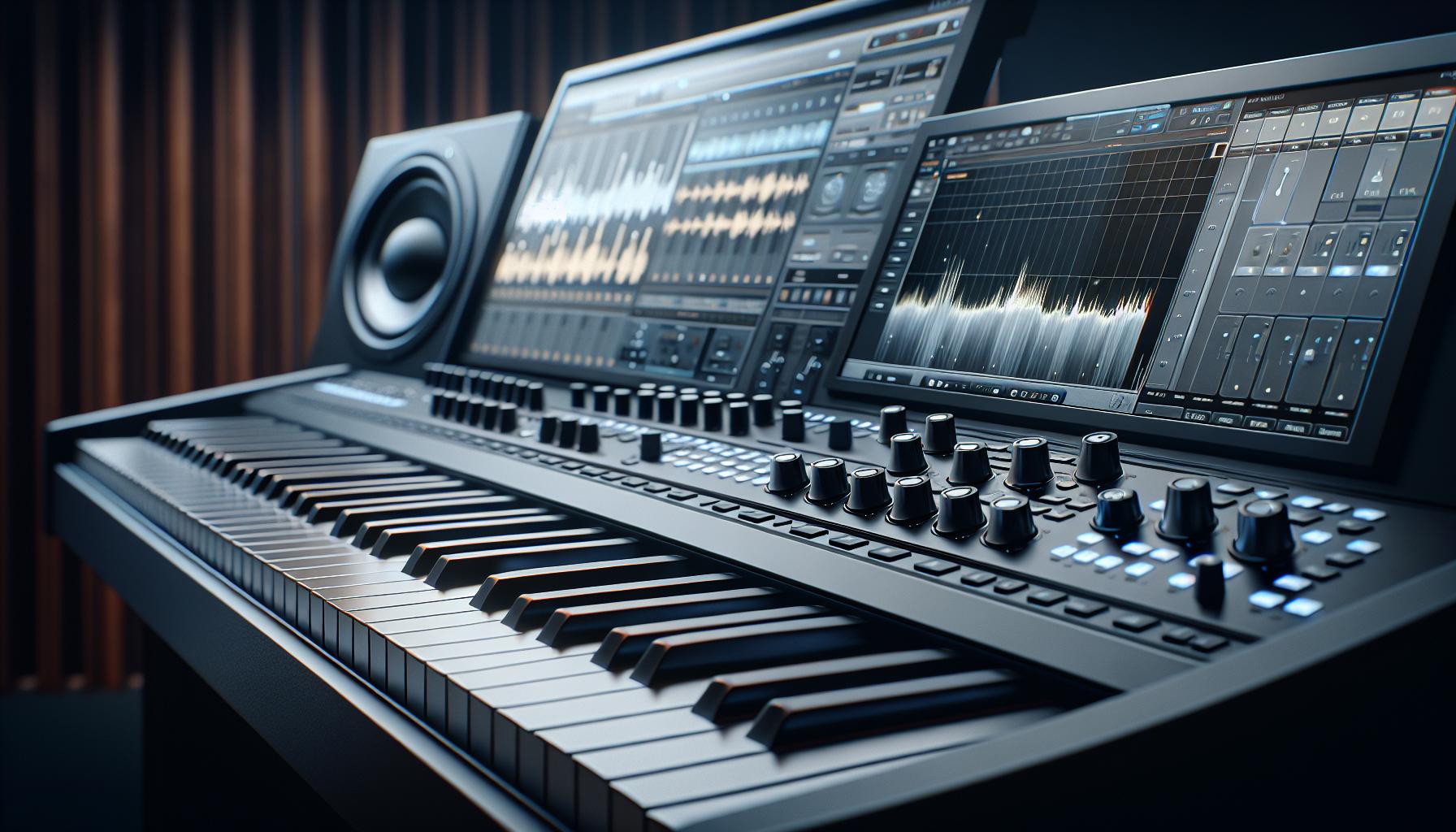
Digital pianos could be referred to as the hybrid offspring of acoustic pianos and electronic keyboards. They espouse a broader range of sounds and are friendlier to sound modifications. Typically, a digital piano has the same length – 88 keys – like its acoustic parent. Giving you a more than ample keyboard compass for various music pieces.
One key advantage that a digital piano has over isn’t loud enough electronic keyboard is the superior sound quality. Mostly, due to the in-built speaker systems. But here's a twist, these sound amplifying speakers, slightly dent the portability score of digital pianos in comparison to keyboards.
An interesting feature that digital pianos boast is weighted keys. They lend a more authentic playing experience, similar to striking the ivories on an acoustic piano.
Let's talk about the tech-savvy side of digital pianos. They often come with a MIDI output. What does that mean for you? Well, you can connect your digital piano to your computer via a reasonably priced interface. Imagine having the ability to record, edit your playing, add more parts, or even control other instruments!
So whether you are a novice, thinking about trying your hand at piano-playing or an active keyboard enthusiast or perhaps, a professional stage musician – a digital piano might just be the suitable upgrade for you.
The crucial point here is to not get overwhelmed with the jargon you see in product descriptions or hear from salespeople. We're here to simplify all that. Let's explore the key differences between digital pianos, acoustic pianos, and electronic keyboards in the subsequent section.
Now that we've unpacked digital pianos and seen their appeal, our next stop is a closer look at their acoustic counterparts and electronic keyboards. We'll aim to strip away all the confusion, delving deeper into each type's strengths and weaknesses. That would ideally set you in the right track to making the best-informed decision when buying your first, or next musical instrument.
Acoustic pianos
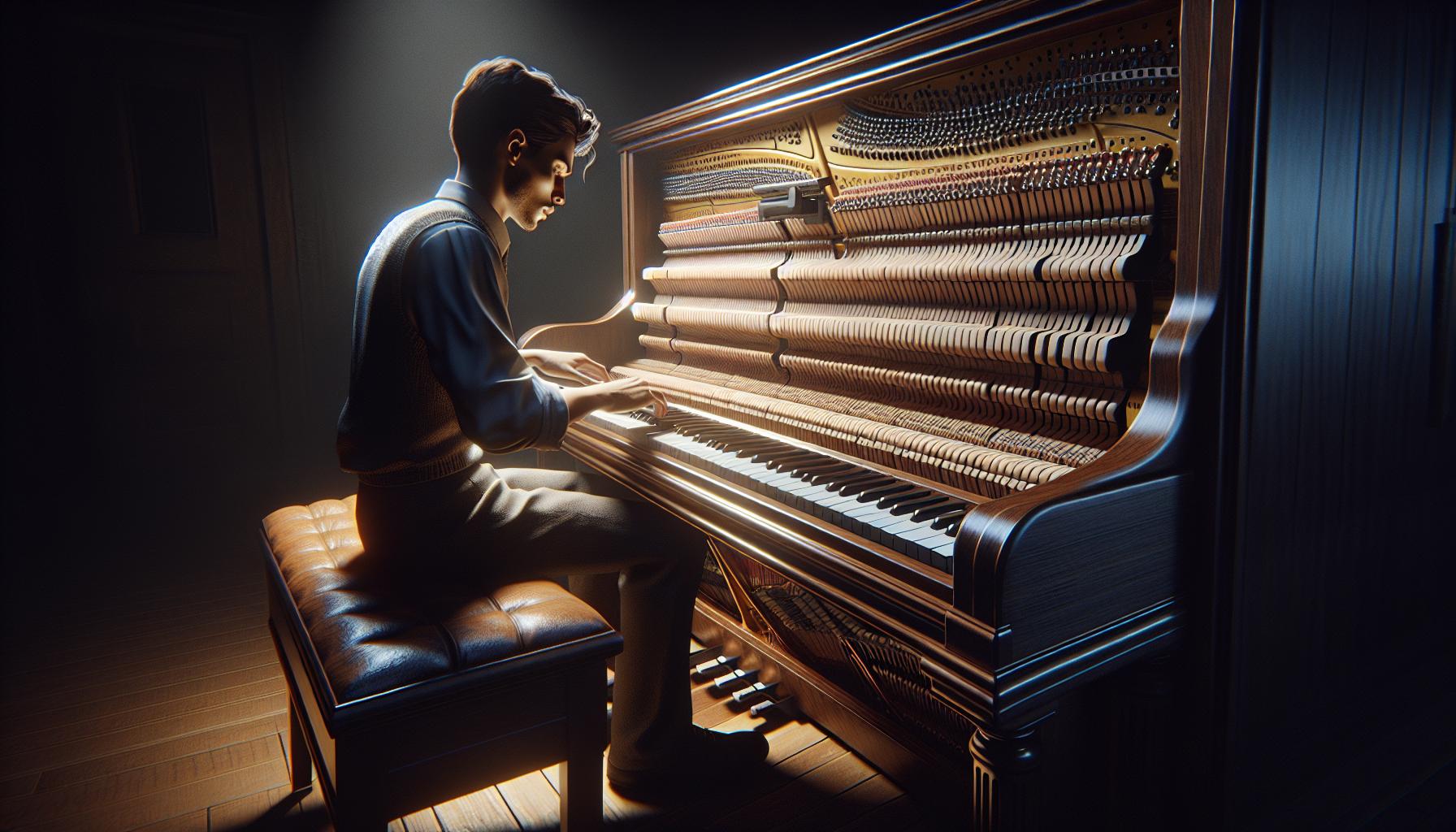
When it comes to learning piano, don't underestimate the power of a true acoustic instrument. They provide a level of responsiveness that can't be matched, even by the best digital pianos. The sound produced by real strings and real wood is something many students find invaluable. However, acoustic pianos come with a hefty price tag. The typical price range for a quality acoustic upright, also known as a vertical piano, ranges between $4,000 to $8,000. For a grand or baby grand piano, you'd be looking at $6,000 to $10,000 or even more. Despite the steep prices, the enriched sound and authenticity they offer can justify the cost for many. But don't let the cost deter you, many piano stores offer affordable rental programs.
Features That Are Probably Unnecessary for Student Use
As students are getting comfortable with their new instrument, it's essential to remember that a luxury feature-filled piano isn't always necessary. In fact, most pianists, in my experience, seldom use anything beyond the basic grand piano sound.
Speakers
While we strive for a rich and immersive sound, paying attention to the speaker systems on acoustic pianos may not always produce valuable benefits. You may find that within a certain price range, no piano features a speaker system large and sophisticated enough to mimic the sound of a grand piano faithfully. The goal, in any case, is that the piano should sound adequately full and not distort severely when deep bass notes are being played.
Connections
Connections such as a USB jack for interfacing with computers and MIDI sound modules might not be essential for beginners. The basics students should expect are a headphone jack, which can double as an output for use with an amp or a recording system, and a connection for a sustain pedal.
Special Features
Special features such as a built-in metronome, voice recorder, or rhythm machine may be beneficial for more advanced players, but aren't essential for beginners. However, if a beginner is looking towards a more advanced level of play, these features could provide some utility. Ease of use is equally important, and intuitive physical controls can make the learning process smoother.
It Sounds Different
So, are cheap piano keyboards a help or a hindrance? Well, it's not a simple yes or no answer. It's about understanding what you're getting into and making sure it aligns with your musical goals. Cheap pianos can be a great starting point. They're affordable and can help you dip your toes into the world of music. But remember, they might not offer the best sound quality or the full range of keys.
If you're serious about your piano playing journey, a digital or acoustic piano might be a better long-term investment. They offer superior sound quality, a more authentic playing experience, and a wider range of keys. Yes, they're pricier, but there are affordable rental programs to consider.
At the end of the day, it's not about the price tag. It's about finding a piano that meets your needs and helps you grow as a musician. So go ahead, take your time, do your research, and find the piano that sings to you.
Harlan Kilstein began playing piano during covid with no piano background at all. He taught himself how to play learning what to do and what not to do.
Today he's an advanced intermediate player and can help you grow in your skills because he learned all this on his own.

